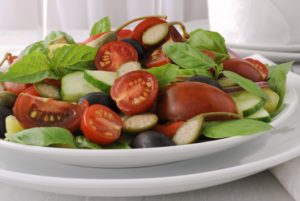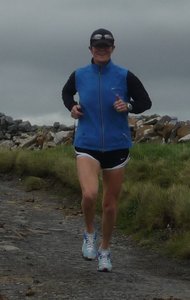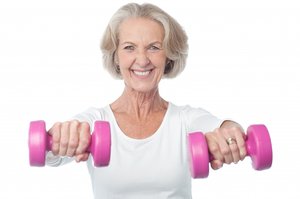If you have made a New Year’s resolution to improve your fitness; do more exercise, increase your strength, eat a healthier diet, lose weight then fear not, help is at hand. The following tips and training schedules will help you feel healthier, fitter and more energised:![]()
- Know your METs for Prevention – Recurrence of Disease is first and foremost! If time is limited for
 exercising make cardiovascular exercise your first choice by using the largest muscle groups in a repetitive movement (example; walking, jogging, swimming etc.).
exercising make cardiovascular exercise your first choice by using the largest muscle groups in a repetitive movement (example; walking, jogging, swimming etc.).
- Set realistic goals. If you cannot see yourself holding your exercise routine for a period of 15 weeks then the task is too great. The average time a person holds an exercise programme is 6-8 weeks; this is too short for life changing benefits.
- Be consistent, take small steps. Increase time, distance or repetitions of your workouts every 3 weeks. This allows the body time to adapt to the routine/stress level which makes advancing to a higher level easier and safer.
- Stay hydrated, drink at least 1.5 litres of water daily. Keep in mind high water-volume foods also provide your body with fluids. Fruits and vegetables are composed of 90 percent water.
 When it comes to eating healthy, losing weight or maintaining your current weight, you are more likely to be successful if you make small changes over time rather than changing your entire diet all at once.
When it comes to eating healthy, losing weight or maintaining your current weight, you are more likely to be successful if you make small changes over time rather than changing your entire diet all at once.
To schedule a consultation with Marie please call 085 196 5468 or email marie@mariemurphyhealthfitness.com


 exercising make cardiovascular exercise your first choice by using the largest muscle groups in a repetitive movement (example; walking, jogging, swimming etc.).
exercising make cardiovascular exercise your first choice by using the largest muscle groups in a repetitive movement (example; walking, jogging, swimming etc.). When it comes to
When it comes to  This week we met with the Minister of Health ‘Leo Varadkar’ and discussed the plans for the centre. I had the opportunity to share with him a little about the ‘Murphy (METs) Programme’ and my goal to increase awareness to the health benefits associated with daily physical activity and draw attention to the amount and intensity of physical activity for cancer survivors to achieve these benefits; physiologic, metabolic and psychological.
This week we met with the Minister of Health ‘Leo Varadkar’ and discussed the plans for the centre. I had the opportunity to share with him a little about the ‘Murphy (METs) Programme’ and my goal to increase awareness to the health benefits associated with daily physical activity and draw attention to the amount and intensity of physical activity for cancer survivors to achieve these benefits; physiologic, metabolic and psychological.
 These types of exercises would include brisk walking (about 3-4 miles in an hour). Walking is an excellent exercise; however, it is important to do enough of it to increase the number of METs. While the American College of Sports Medicine (ACSM) has determined that people need 4-6 METs five days per week, some exercise research suggests that you need more and it is recommended that people strive for 15-20 METs per week. To figure out how many METs you are using and how to increase it, consider the following;
These types of exercises would include brisk walking (about 3-4 miles in an hour). Walking is an excellent exercise; however, it is important to do enough of it to increase the number of METs. While the American College of Sports Medicine (ACSM) has determined that people need 4-6 METs five days per week, some exercise research suggests that you need more and it is recommended that people strive for 15-20 METs per week. To figure out how many METs you are using and how to increase it, consider the following;
 Anyone who has an interest in playing sports or keeping fit should understand the effects alcohol can have on their performance. Not having a balanced approach to alcohol could be what gets in the way of you reaping the rewards from all the work you’ve put in.
Anyone who has an interest in playing sports or keeping fit should understand the effects alcohol can have on their performance. Not having a balanced approach to alcohol could be what gets in the way of you reaping the rewards from all the work you’ve put in.



 first and foremost! If time is limited for exercising make cardiovascular exercise your first choice by using the largest muscle groups in a repetitive movement (example; walking, jogging, swimming etc.).
first and foremost! If time is limited for exercising make cardiovascular exercise your first choice by using the largest muscle groups in a repetitive movement (example; walking, jogging, swimming etc.).
 Stair climbing is also excellent for increasing your bone strength (bone density) in your hips; it works on the main muscles for walking and is very good for your overall health. While watching your favourite TV programme or listening to your favourite radio programme marching on the spot or any form of dancing are additional choices.
Stair climbing is also excellent for increasing your bone strength (bone density) in your hips; it works on the main muscles for walking and is very good for your overall health. While watching your favourite TV programme or listening to your favourite radio programme marching on the spot or any form of dancing are additional choices.
 When athletes complete a marathon distance usually their thoughts are not focused on the importance of recovery; making the right choices in post-training and nutrition. Crossing the finishing line participants are mainly excited and relieved that they have finished.
When athletes complete a marathon distance usually their thoughts are not focused on the importance of recovery; making the right choices in post-training and nutrition. Crossing the finishing line participants are mainly excited and relieved that they have finished. The following 5 tips can help lower risk of impairments:
The following 5 tips can help lower risk of impairments: